Do you see colorful beetles in your garden attacking your plants and skeletonizing leaves? It could be either harlequin bugs or Japanese beetles – both relatively new to our area.
What is a harlequin bug?
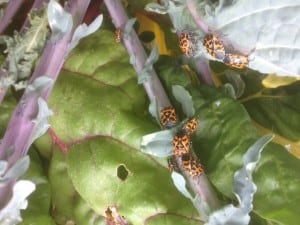 Harlequin bugs are black stink bugs that are marked with bright orange and red spotting. As of a few years ago, they were only found in Southern Colorado, but they are becoming increasing familiar here in Boulder and Denver as their range moves north. Harlequin bugs are most destructive to cabbage, kale, and chard, but it’s possible to find them on any plants in your garden. They suck the sap out of plant foliage, leaving white and brown spotting.
Harlequin bugs are black stink bugs that are marked with bright orange and red spotting. As of a few years ago, they were only found in Southern Colorado, but they are becoming increasing familiar here in Boulder and Denver as their range moves north. Harlequin bugs are most destructive to cabbage, kale, and chard, but it’s possible to find them on any plants in your garden. They suck the sap out of plant foliage, leaving white and brown spotting.
Harlequin bugs can have three generations in one season in Colorado, so you may find eggs, nymphs, and adult harlequin bugs in your garden all at once. Adults can overwinter in plant debris.
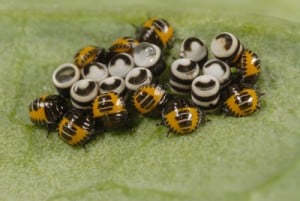
Harlequin bug eggs (white and black striped eggs) are laid in neat rows on the underside of leaves. Here, eggs are shown along with harlequin bug nymphs.
What is a Japanese beetle?
Japanese beetles are iridescent green beetles with brown wings. They tend to attack tomatoes, beans, grape vines, roses, and certain trees, but they can be found eating lots of different plants. They eat the leaf parts between the veins (skeletonizing the leaf surface) and can cause enough damage to severely stunt and even kill plants.
Japanese beetles lay white eggs on the soil surface, which then hatch into white grubs that feed on plant roots. These grubs can cause some damage to vegetable crops, but the adult beetle tends to be more worrisome in the veggie garden. Japanese beetles can also overwinter as larvae in the soil.
What do I do to save my garden?
Here are three things you can do to get rid of harlequin bugs and Japanese beetles:
- Pick bugs off plants manually and squish between your fingers to kill them. This seems gross, but is an extremely effective way to get rid of both harlequin bugs and Japanese beetles! Also look for the white and black rows of harlequin bug eggs on the underside of leaves and squish those.
- A less gross and equally effective way to kill these pests is to knock them off the plant and into a container of soapy water. Both harlequin bugs and Japanese beetles will easily fall off the plant leaves when shaken. This tends to be most effective in the early morning before the Japanese beetles have warmed up (later in the day they have been known to fly away when knocked off the leaves). Discard the soapy water, pests and all, and repeat this process every couple days until the population is reduced.
- Both harlequin bugs and Japanese beetles can over winter in plant debris or in the soil, so end-of-season clean up is extremely important if you’ve experienced these pests throughout the season. Pull out all dead plant material and aggressively till the soil with a pickax, fork, or shovel in order to kill Japanese beetle grubs and to eliminate habitat for the harlequin bugs.

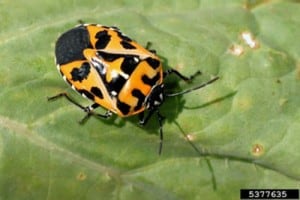
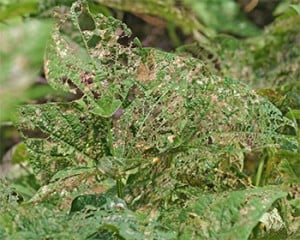
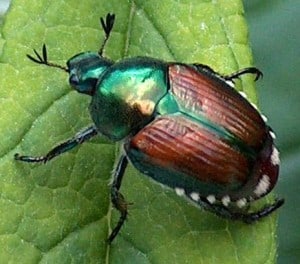

Japanese beetles–who knew? Urban Farm Co. did! Thank you for being such a great gardening mentor.
Can I kill the Japanese beetles with raid?
I have them in My garden in Pennsylvania.